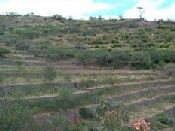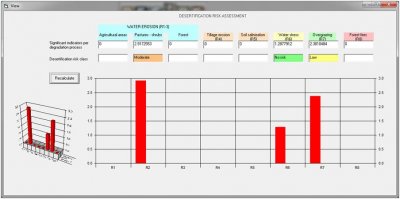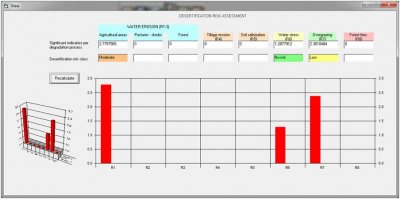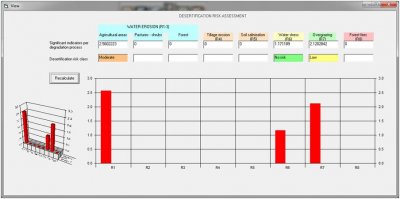| Evaluating the desertification risk assessment tool with local experimental results |
 |
|
Author: Victor Jetten
Introduction The north west of Morocco has areas with extensive gullying of the agricultural lands. High pressure agriculture and overgrazing, combined with occasional heavy rainfall, causes severe land degradation. An additional problem is sedimentation in the drink water reservoirs downstream. For farmers in the area, annual crops for food production and livestock for immediate income is vital. The area characterized by a strong variation in seasonal rainfall from year to year. Ploughing is done at the first rains after September and with sufficient rainfall there will be a moderate harvest in February (mostly Wheat and Barley). If the crop fails it is used for fodder. For farmers in the area, annual rainfed crops for food production and livestock for immediate income is vital. There are no additional water sources and water conservation measures could help in this situation.
Desertification indices
The second technique is minimum tillage on a rainfed cereal producing field on stony shallow soils. The slope angle is the same (20%). Under unmitigated circumstances the water erosion risk is moderate (2.78), a low overgrazing risk (2.38) and no water stress risk (1.29). Applying minimum tillage slightly lowers the erosion risk (still moderate: 2.56) and lowers also the water stress (1.17) and overgrazing risk (2.12).
Conclusions
|
Study sites

Acknowledgement
The DESIRE project was
|
DESIRE brought together the expertise of
26 international research institutes
and non-governmental organisations.
This website does not necessarily
represent the opinion of the
European Commission. The European
Commission is not responsible for
any use that might be made of the
information contained herein. 




